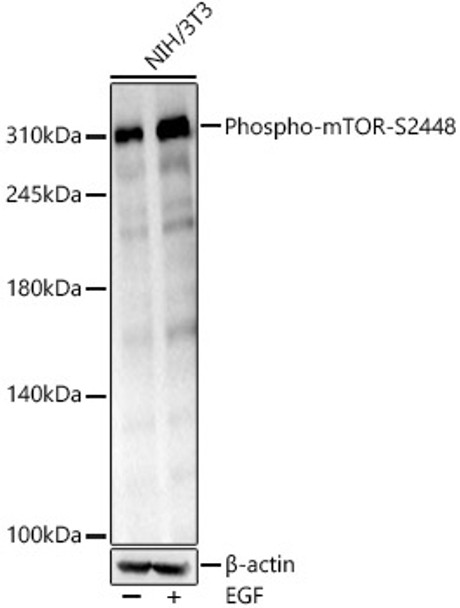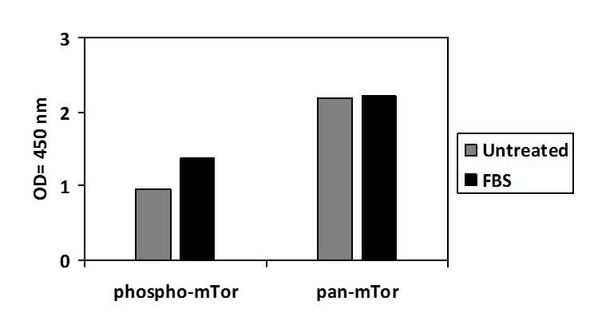Description
| Product Name: | Phospho-mTOR-S2448 Monoclonal Antibody |
| Product Code: | CABP1413 |
| Reactivity: | Human, Mouse, Rat |
| Applications: | Western blotting, Immunohistochemistry |
| Host Species: | Rabbit |
| Purification Method: | Affinity purification |
| Isotype: | IgG |
| Clone No: | ARC59819 |
| Reactivity: | Human, Mouse, Rat |
| Tested Applications: | WB, IHC-P, ELISA |
| Key Applications: | Western blotting, Immunohistochemistry |
| Recommended Dilution: | WB 1:500-1:1000, IHC-P 1:50-1:200 |
| Storage Buffer: | Store at -20°C. Avoid freeze / thaw cycles.Buffer: PBS with 0.05% proclin300, 0.05% BSA, 50% glycerol, pH7.3. |
| Positive Samples: | NIH/3T3 EGF |
| Cellular Location: | Cytoplasm, Cytoplasmic side, Endoplasmic reticulum membrane, Golgi apparatus membrane, Lysosome, Mitochondrion outer membrane, Nucleus, PML body, Peripheral membrane protein |
The protein encoded by this gene belongs to a family of phosphatidylinositol kinase-related kinases. These kinases mediate cellular responses to stresses such as DNA damage and nutrient deprivation. This kinase is a component of two distinct complexes, mTORC1, which controls protein synthesis, cell growth and proliferation, and mTORC2, which is a regulator of the actin cytoskeleton, and promotes cell survival and cell cycle progression. This protein acts as the target for the cell-cycle arrest and immunosuppressive effects of the FKBP12-rapamycin complex. Inhibitors of mTOR are used in organ transplants as immunosuppressants, and are being evaluated for their therapeutic potential in SARS-CoV-2 infections. Mutations in this gene are associated with Smith-Kingsmore syndrome and somatic focal cortical dysplasia type II. The ANGPTL7 gene is located in an intron of this gene.
| Immunogen: | A synthetic phosphorylated peptide around S2448 of human mTOR. |
| Sequence: | TDSYS |
| Synonyms: | SKS, FRAP, FRAP1, FRAP2, RAFT1, RAPT1 |
| Calculated MW: | 289kDa |
| Observed MW: | 310kDa |






